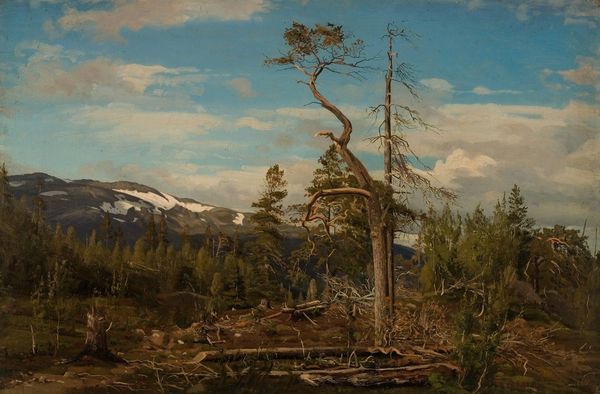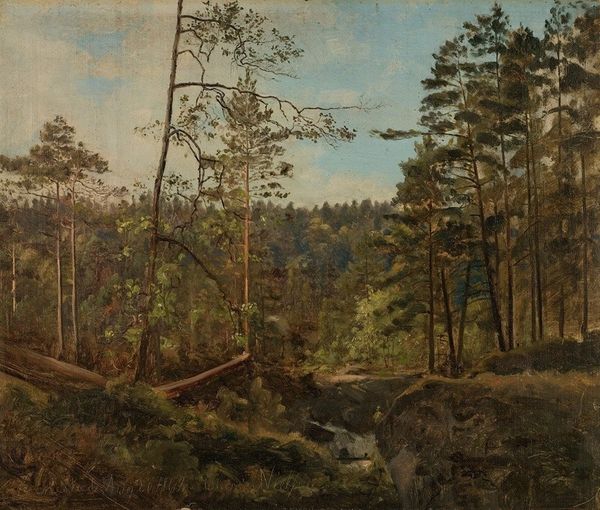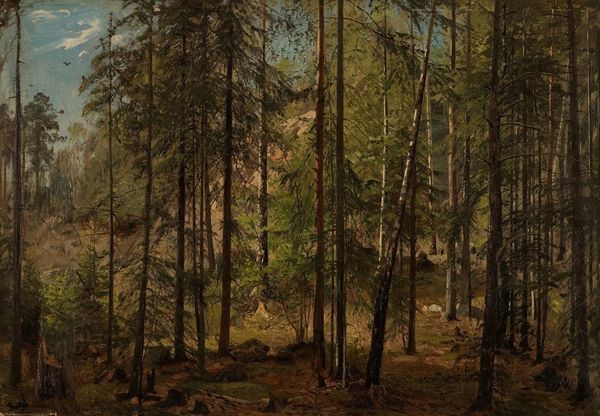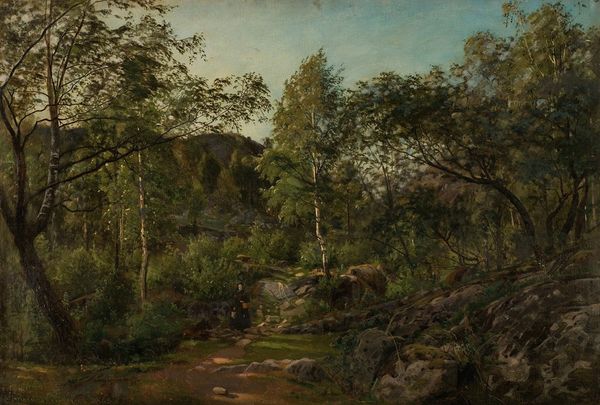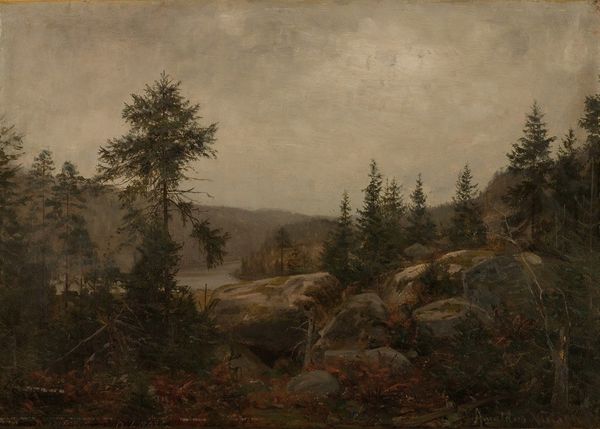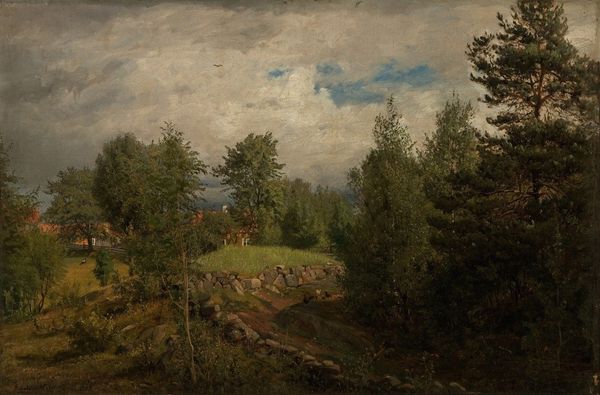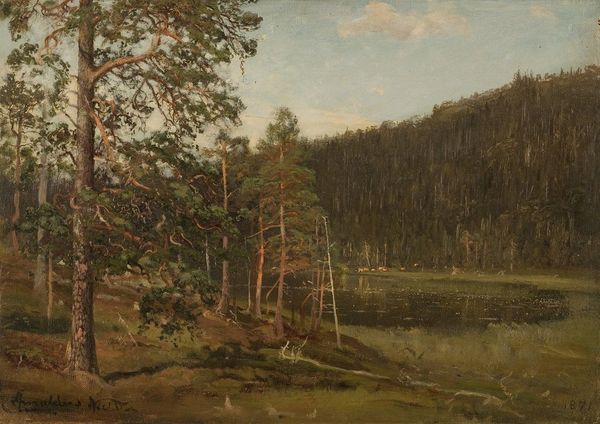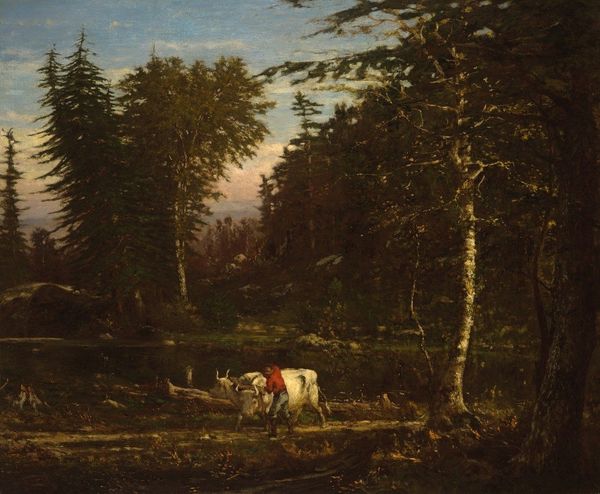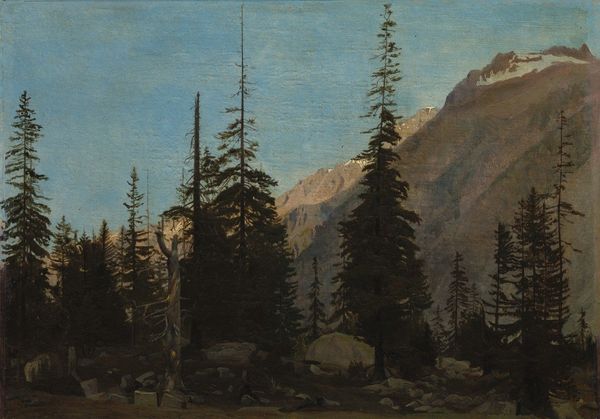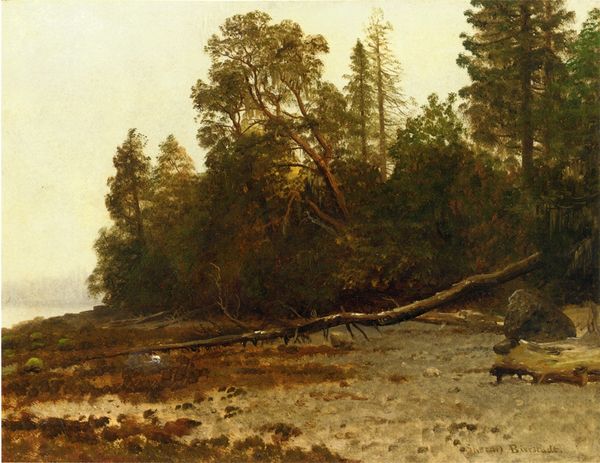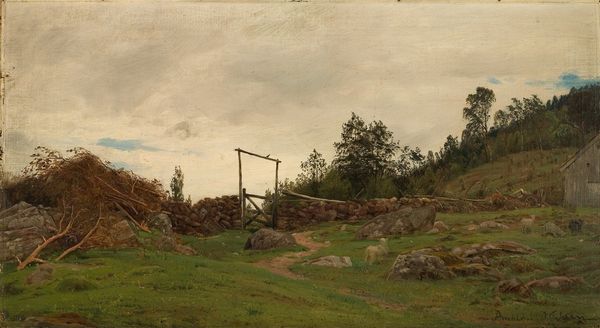
Copyright: Public Domain: Artvee
Curator: Right now, we're standing in front of "Vingerås, Telemark", an 1866 oil painting by Amaldus Nielsen. Editor: Immediately, I'm struck by the dark earth tones dominating the lower half, giving it a really weighty, grounded feeling. Curator: Absolutely. Nielsen was part of a generation of artists consciously trying to represent the specific character of the Norwegian landscape and national identity. Think about the cultural moment; Norway was seeking independence, defining itself. Paintings like this played a crucial role in fostering national pride through the land itself. Editor: It's intriguing how he renders the texture of the earth and the felled trees; you can almost feel the roughness. Were those trees felled for industry, perhaps? There's labor implicit here, shaping the landscape for some purpose, for access. Curator: Interesting point. The historical records point toward forestry, yes. And while there's a strong sense of romanticism, there is also a grounding in realism with an unflinching depiction of natural resources at play, both standing and hewn. It speaks to how people related to the natural resources around them. Editor: It is a complex message. The palette itself – earth browns and deep greens with just hints of sky—underscores that relationship. Even the artistic materials: the paint itself and how he has employed the application – a dance between romanticism and a resource driven world, as you said. Curator: Exactly, and thinking of museums as shaping tastes – pieces like this solidified how Norwegians would later visualize their connection with nature through paintings. It wasn’t just representation; it was nation-building. Editor: The way Nielsen handles light too, strategically illuminating the scene makes you pause. It asks us, where is this raw material headed? Curator: Spot on. The painting is not just a depiction, but a statement on Norwegian history and society. Editor: Yes, it shows the labor in the process. Curator: Definitely offers us some new thoughts to consider about art and its place within national history. Editor: And that’s the intersection of land, labor, and artistry – always revealing, isn't it?
Comments
No comments
Be the first to comment and join the conversation on the ultimate creative platform.

